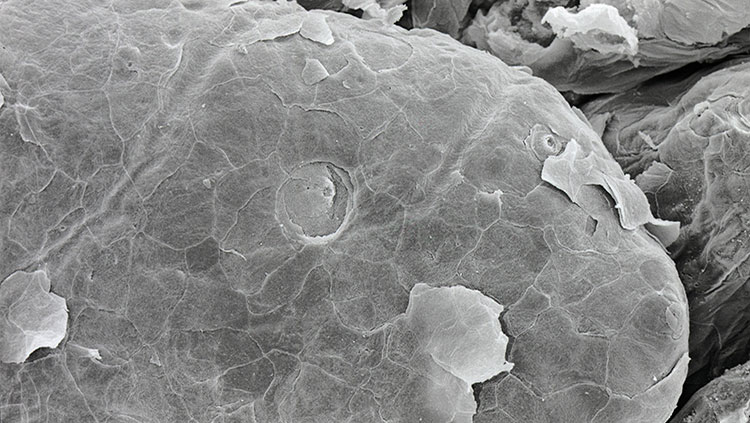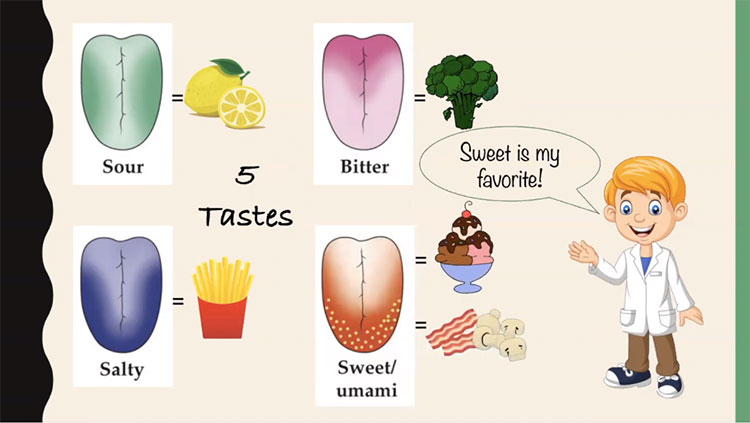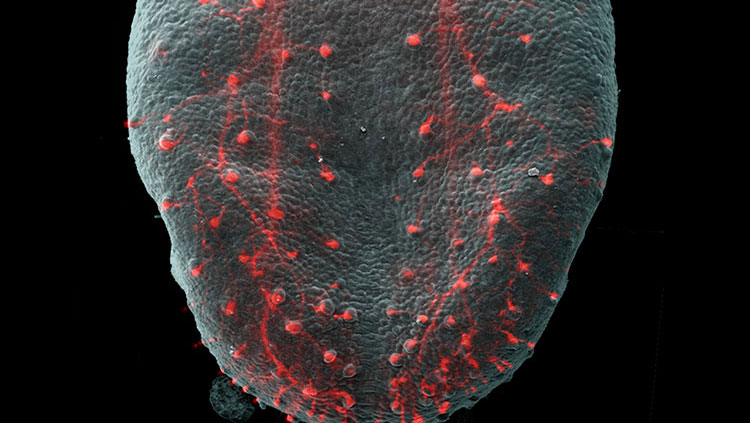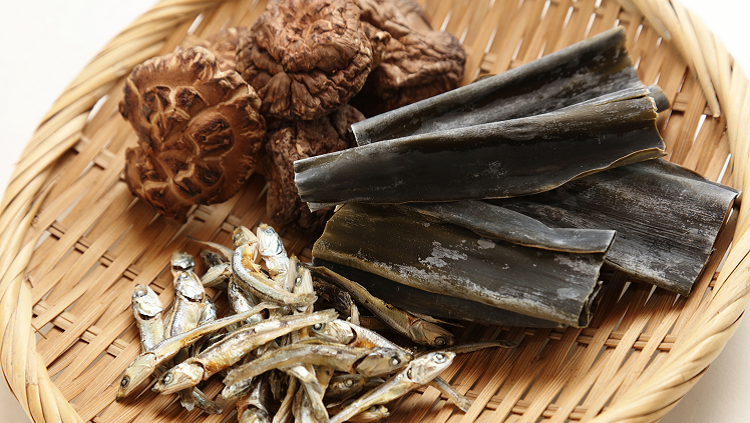The hundreds of visible bumps that cover your tongue are not, in fact, taste buds — they’re papillae like this “fungiform papilla,” seen above. Their job, along with other types of papillae, is to sense touch and taste — in this case, like feeling the texture of a crispy cookie and tasting its sweet flavor in your mouth.
Before you can satisfy your cookie craving, a sugary molecule must first fall into a taste bud through a small opening on the fungiform papilla, seen here in the very center. Inside, dozens of so-called “gustatory” cells recognize it. Gustatory cells matching the molecule’s type — sweet, salty, sour, bitter, or the savory umami flavor — activate and send the signal along, so you experience the right taste.
CONTENT PROVIDED BY
BrainFacts/SfN
References
Bernays, E., & Chapman, R. (2016, April 22). Taste bud. Retrieved from https://www.britannica.com/science/taste-bud.
Cheng, L., & Robinson, P. (1991). The distribution of fungiform papillae and taste buds on the human tongue. Archives of Oral Biology, 36(8), 583–589. doi: 10.1016/0003-9969(91)90108-7
Taste Anatomy. (n.d.). Retrieved from https://www.sensorysociety.org/knowledge/sspwiki/Pages/Taste Anatomy.aspx.
Also In Taste
Trending
Popular articles on BrainFacts.org



















